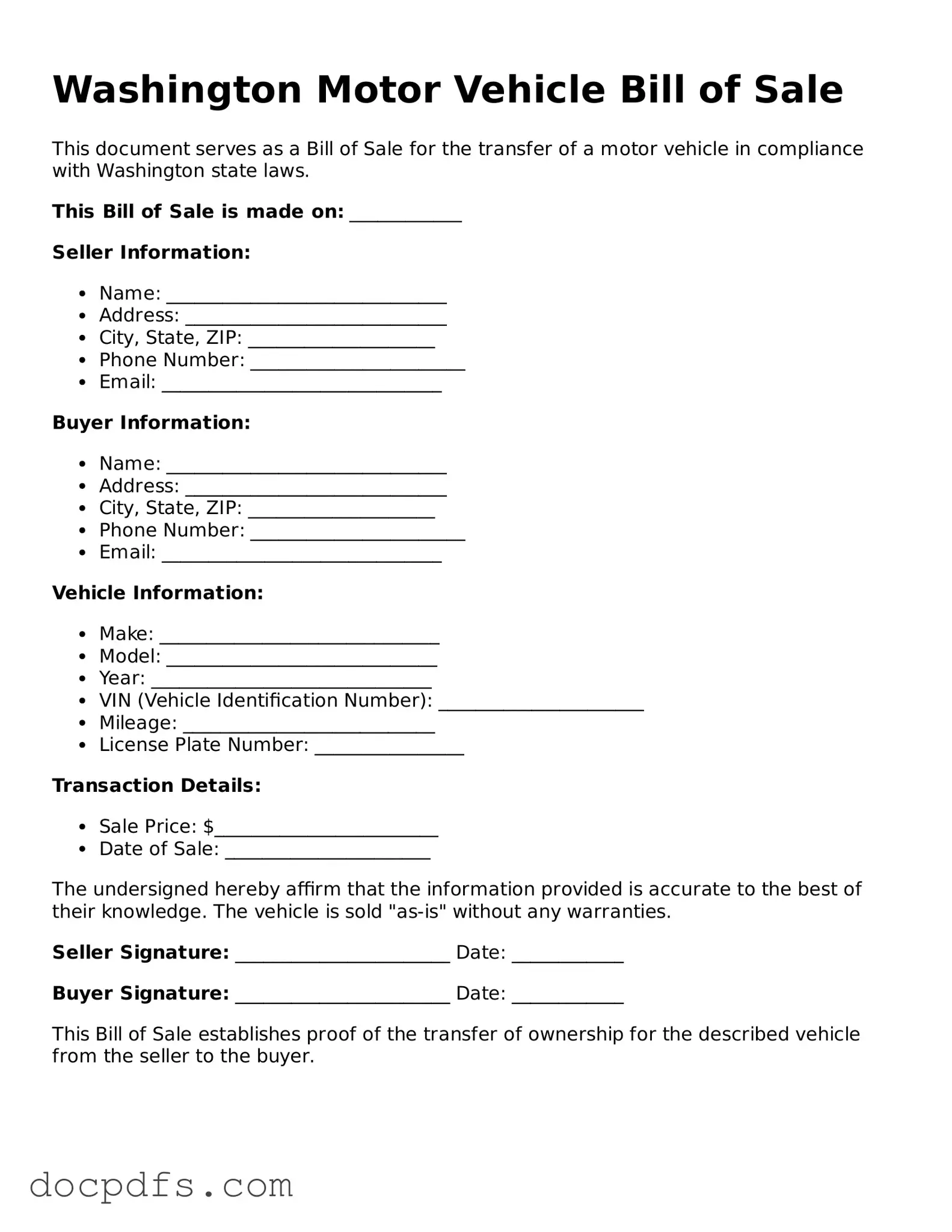What is a Washington Motor Vehicle Bill of Sale?
The Washington Motor Vehicle Bill of Sale is a legal document that records the transfer of ownership of a vehicle from one party to another. It includes essential details such as the vehicle's make, model, year, Vehicle Identification Number (VIN), and the sale price. This document serves as proof of the transaction and is important for both the buyer and seller for registration and tax purposes.
Is a Bill of Sale required in Washington State?
While a Bill of Sale is not legally required for every vehicle transaction in Washington State, it is highly recommended. Having a Bill of Sale can help protect both the buyer and seller by providing evidence of the sale. It can also assist in the registration process and may be required by the Department of Licensing when transferring the title.
A complete Washington Motor Vehicle Bill of Sale should include the following information:
-
Names and addresses of both the buyer and seller
-
Vehicle details, including make, model, year, and VIN
-
Sale price of the vehicle
-
Date of the transaction
-
Signatures of both parties
Including this information ensures clarity and can help avoid disputes in the future.
Washington State provides a standard Motor Vehicle Bill of Sale form that can be obtained online from the Washington Department of Licensing website. Additionally, many local auto dealerships, legal stationery stores, and online legal service providers offer templates that can be filled out. Ensure that any form used complies with state requirements.
Can I create my own Bill of Sale?
Yes, you can create your own Bill of Sale as long as it includes all necessary information. It is important to ensure that the document is clear and includes all required details to be legally binding. Using a template can simplify the process and ensure compliance with state regulations.
What should I do after completing the Bill of Sale?
After completing the Bill of Sale, both the buyer and seller should keep a signed copy for their records. The buyer will need to present the Bill of Sale when registering the vehicle and transferring the title at the Department of Licensing. It is advisable for the seller to notify their insurance company of the sale and to remove the vehicle from their policy.
